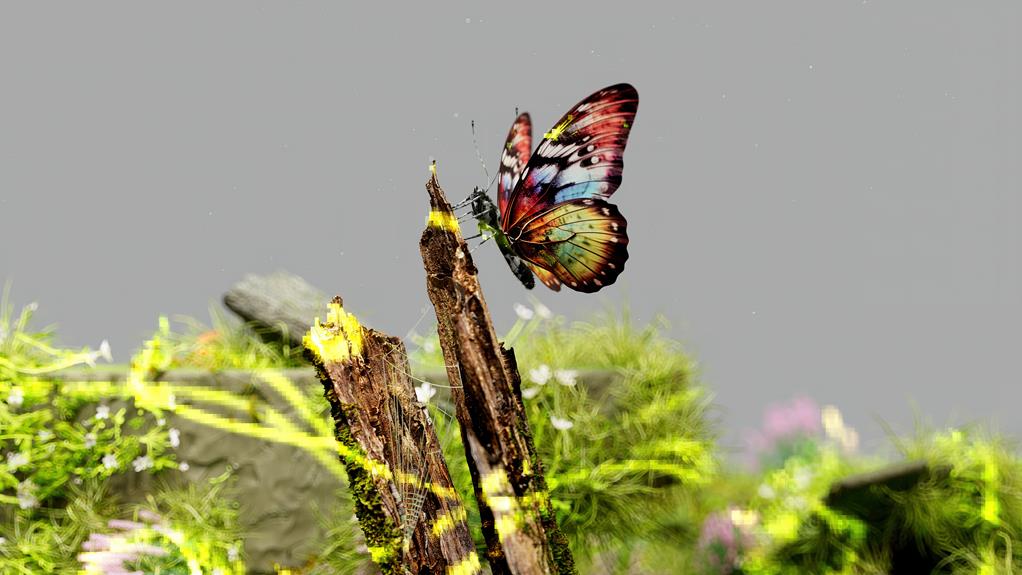What Are Top Sustainable Methods for Biodiversity Conservation?
As stewards of our planet, we are like guardians of a vibrant tapestry, woven with the threads of countless species. In order to preserve this intricate web of life, we must employ sustainable methods for biodiversity conservation.
Through habitat restoration, sustainable agriculture practices, protected area designation, conservation education and awareness, and sustainable wildlife management, we can ensure the resilience and survival of the diverse ecosystems that provide us with a sense of belonging and interconnectedness.
Together, let us embark on this crucial journey of preservation.
Habitat Restoration
We believe that implementing large-scale habitat restoration projects is a key strategy for effectively conserving biodiversity. Restoration techniques play a crucial role in restoring and reviving degraded habitats, allowing for the reestablishment of ecological balance.
These techniques involve a range of approaches, such as reforestation, wetland restoration, and the removal of invasive species. Reforestation efforts focus on replanting trees in areas that have been deforested, helping to restore habitat for various plant and animal species.
Wetland restoration involves restoring wetland ecosystems that have been drained or altered, providing vital habitats for numerous species. Additionally, removing invasive species helps to restore native plant communities, ensuring a healthier and more diverse ecosystem.
Sustainable Agriculture Practices
One effective strategy for conserving biodiversity and building upon the previous discussion on habitat restoration is the implementation of sustainable agriculture practices. Regenerative farming and agroforestry are two key methods that promote biodiversity while also ensuring the long-term sustainability of agricultural systems.
Regenerative farming focuses on restoring and improving soil health by minimizing the use of synthetic inputs and adopting practices such as cover cropping, crop rotation, and conservation tillage. By enhancing soil fertility and structure, regenerative farming supports a diverse range of microorganisms, earthworms, and beneficial insects, which in turn contribute to the overall biodiversity of the agricultural landscape.
Agroforestry, on the other hand, involves the integration of trees and shrubs within agricultural systems. This practice provides multiple benefits, including shade, windbreaks, and erosion control, while also creating habitat for birds, insects, and other wildlife. Agroforestry systems can also enhance soil fertility, water retention, and carbon sequestration, thus contributing to the overall sustainability of agricultural landscapes.
Incorporating sustainable agriculture practices like regenerative farming and agroforestry can help farmers maintain productive and profitable farms while also conserving biodiversity and promoting ecosystem health. By adopting these methods, we can create a more sustainable and resilient agricultural system that supports both human needs and the preservation of our planet’s biodiversity.
Protected Area Designation
To further enhance biodiversity conservation efforts, it’s crucial to regularly designate protected areas. Protected areas are essential for the preservation and management of ecosystems, habitats, and species.
One effective method for ensuring the effectiveness of protected areas is the establishment of ecological corridors. These corridors connect fragmented habitats, enabling species to migrate, disperse, and maintain genetic diversity. By promoting species movement, ecological corridors contribute to the long-term survival of biodiversity.
Another vital aspect of protected area designation is stakeholder engagement. Involving local communities, indigenous groups, government agencies, and non-governmental organizations in the decision-making process ensures that multiple perspectives and interests are considered. This collaborative approach fosters a sense of ownership and responsibility, leading to more effective management and protection of the designated areas.
Conservation Education and Awareness
An essential aspect of biodiversity conservation is promoting conservation education and awareness. By providing environmental education and engaging with communities, we can foster a sense of belonging and inspire individuals to take action. Here are four key reasons why conservation education and awareness are crucial:
- Empowerment: Educating people about the importance of biodiversity empowers them to make informed choices and take actions that can positively impact the environment.
- Behavioral change: Through education and awareness, individuals can learn how their daily actions affect biodiversity and make changes to reduce their ecological footprint.
- Community involvement: Engaging communities in conservation efforts fosters a sense of ownership and collective responsibility, leading to long-term sustainability.
- Inspiration: By raising awareness about the beauty and value of biodiversity, we can inspire individuals to appreciate and protect the natural world.
Sustainable Wildlife Management
The sustainable management of wildlife is a key element in biodiversity conservation. Community-based conservation initiatives play a crucial role in ensuring the long-term survival of wildlife populations. These initiatives involve local communities in decision-making processes and empower them to actively participate in wildlife management.
Sustainable hunting practices also contribute to the conservation of biodiversity. By implementing strict regulations and monitoring systems, we can ensure that hunting activities are conducted in a way that minimizes negative impacts on wildlife populations. This includes setting quotas, implementing seasonal restrictions, and promoting responsible hunting practices.
Additionally, community-based conservation programs can provide alternative livelihood options to reduce dependence on hunting as a source of income.
Conclusion
In conclusion, the top sustainable methods for biodiversity conservation include:
- Habitat restoration: Restoring degraded habitats by planting native species, removing invasive species, and creating suitable conditions for the return of wildlife.
- Sustainable agriculture practices: Implementing techniques such as organic farming, agroforestry, and crop rotation to minimize environmental impact and promote biodiversity on farmland.
- Protected area designation: Establishing and managing protected areas, such as national parks and nature reserves, to safeguard important habitats and species.
- Conservation education and awareness: Educating the public about the value of biodiversity, the threats it faces, and the actions individuals can take to protect it.
- Sustainable wildlife management: Implementing measures to ensure the sustainable use of wildlife resources, including regulated hunting and fishing, captive breeding programs, and sustainable harvesting of non-timber forest products.
By implementing these strategies, we can effectively protect and preserve our natural ecosystems and the diverse species that inhabit them. It’s crucial that we prioritize these methods to ensure the long-term survival and well-being of our planet’s biodiversity.
Through a combination of scientific research, collaborative efforts, and public engagement, we can achieve a harmonious coexistence between humans and nature.






